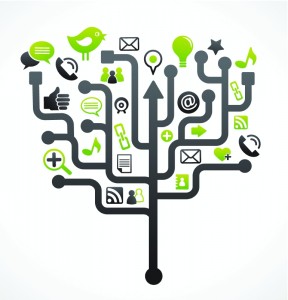The Internet of Things (IoT) is going to take us into the next big technology wave, which will include a massive proliferation of personal connected devices like we have never seen before – cars, toothbrushes, household appliances, watches, medical devices, bicycles, and all sorts of things on our body and in our homes.
At last month’s Mobile World Congress it was declared that the IoT is here to stay and will change how we live and the way we do things.
In one of the sessions, "Future of Analytics is Mobile," will.i.am, the rapper and entrepreneur, was asked what is the future? His answer was, data mining with data being king. Companies will couple data with their consumers’ identity to create an "iDATAy," a new digital buzzword from will.iam. As a result, companies and people will have a better relationship with no middleman. Tomorrow’s operating system will know us. There will be no search engines. What we want will find us.
This is powerful stuff and we can already see some of this happening today if we look at some of the more technologically advanced retailers, like Amazon and Zappos, who are using predictive analytics in order to make product recommendations and offers.
I do almost all of my shopping online, including buying things like shoes, toilet paper, kids supplies, clothes, electronics, e-books, you name it. The only exception is I still enjoy going into a grocery store to shop for food.
As a busy working Mom and marketing manager, I simply do not have the time to waste walking into a store if they do not have what I want. And, there are times where I get just too busy to think about these things beyond the daily life necessities. I am seeing more and more where certain retailers are leveraging the data they have about me and my prior purchases to send me offers for things I didn’t even know I wanted. These show up as emails and in my Facebook account. And, if the offer is spot on - I buy it!
The IoT, is going to take this to an entirely new level and will affect how companies communicate with and market to consumers in a big way. Of course, mobile will be at the forefront of this trend. Eventually, all our personal and business transactions will flow through our mobile devices. I have switched to using Apple Pay since getting my iPhone 6, and some retailers are not there yet. However, they will be soon. And, when they are, my mobile device will collect everything from physiological stats, to what, where and when I buy, to my social interactions, to my travel and finances. Eventually, my home will be connected too, and this will flow into the pool of all my lifestyle data.
For companies and marketers, this is going to blow up the 360-degree customer view we've long imagined. There will be LOTS more data. Today, companies are looking at a filtered version of their customers though just their company’s lens. For instance, a grocery store has a very different view of a customer then say an insurance company. Companies only see the data relevant to their customer view, albeit through a digital clickstream, CRM, marketing, purchasing history, preferences and behavioral data. Yes, they are pairing this with demographic and other data but they are still not seeing the entire picture.
As consumers become more connected new data will become available through partnerships between different types of companies in various industries. The companies who embrace this concept and modernize their data management and business intelligence environment with technologies like event stream processing, Hadoop, data mining, and in-memory analytics will be able to monetize this opportunity with new products and services. And, consumers will agree to have their data used to provide more contextual offers and services. Then, companies and marketers will be looking at a complete lifestyle lens view to our iDATAty.
To learn more about how SAS is helping companies to prepare for the IoT and their growing big data challenges, join us at the upcoming SAS Global Forum or the SAS Global Forum Executive Conference, depending on your role in your organization.

